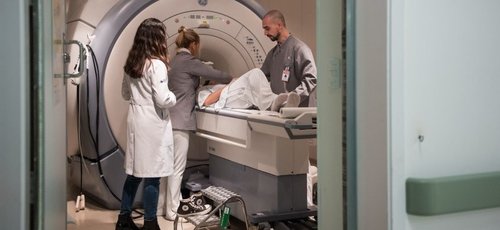VIVA - Life and Violence in Adolescence
Coordinator : Prof. Dr. Augusto Buchweitz
Members : Prof. Dr. Alexandre Rosa Franco, Prof. Dr. Rodrigo Grassi-Oliveira.
Violence among adolescents is growing in alarming numbers. The effects of exposure to violence in this age group include deterioration in school performance, difficulty concentrating, problems attending classes and increasing the dropout rate. It robs young people of the full development of their “mental capital” - that is, of their cognitive and social potential to face life and become the adult they want to be.
Thinking about the questions above, the Brain Institute of the Brain of Rio Grande do Sul - PUCRS and the Inter-American Development Bank (IDB) present the VIVA project, which aims to investigate the effects of violence and stress on learning and the adolescent brain. Based on a joint work between the institutions, the State Secretariat of Education of Rio Grande do Sul And state schools, students from different regions of Porto Alegre will be invited to participate in the research. The study combines measures of school performance and cognitive skills, assessments of brain function and molecular assessments of the hormone cortisol, an indicator of stress, to unravel the effects of violence on adolescent cognition. Several mediating factors that can influence school performance are investigated.
The VIVA project is coordinated by the teachers Dr. Augusto Buchweitz , Dr. Alexandre Franco and Dr. Rodrigo Grassi-Oliveira and seeks to establish, for the first time, the educational and neurobiological effects of exposure to violence in adolescents; its results may serve to assess the positive effect of educational interventions and public actions based on school performance, neuropsychological and neurobiological parameters. The Porto Alegre study is part of a broader school follow-up project carried out by the IDB in Rio Grande do Sul and Brazil, and also in Honduras.
Step by step search:
* Young victims of violence answer a questionnaire
* A neuropsychological evolution is made
* Math and reading tests are performed
* Medical history is made
* A sample of hair and saliva is taken and a functional and structural MRI is performed
In the first stage of the research, the profile of the participants was as follows:
47% of teenagers were victims of conventional crime
18% were mistreated
32% experienced aggression from family members
37% were indirect victims or witnesses of violence
First results:
The preliminary results indicate that the investigated neural and molecular indices may inform the effects of the toxic environment on the cognitive performance of adolescents, and alert for another negative factor for learning and cognitive development. The cortisol measured by the samples indicates that the discrepancy between controls (young people who did not experience violence) and young people who did.
Regarding resonance images, preliminary results indicate that areas of the brain known as somatic markers are disabled in victimized children. The researcher explains that this comes from a hypothesis by Antonio Damasio, that bodily sensations are markedly associated with regions of the brain. For example, anxiety is related to an increase in heart rate; these somatic markers influence decision making, and there is no totally rational decision. The areas involved with the integration of somatic markers with decision making are disconnected in these children.
Check out the media research:
Jornal Nacional - Rede Globo - 9 / 10/2017



